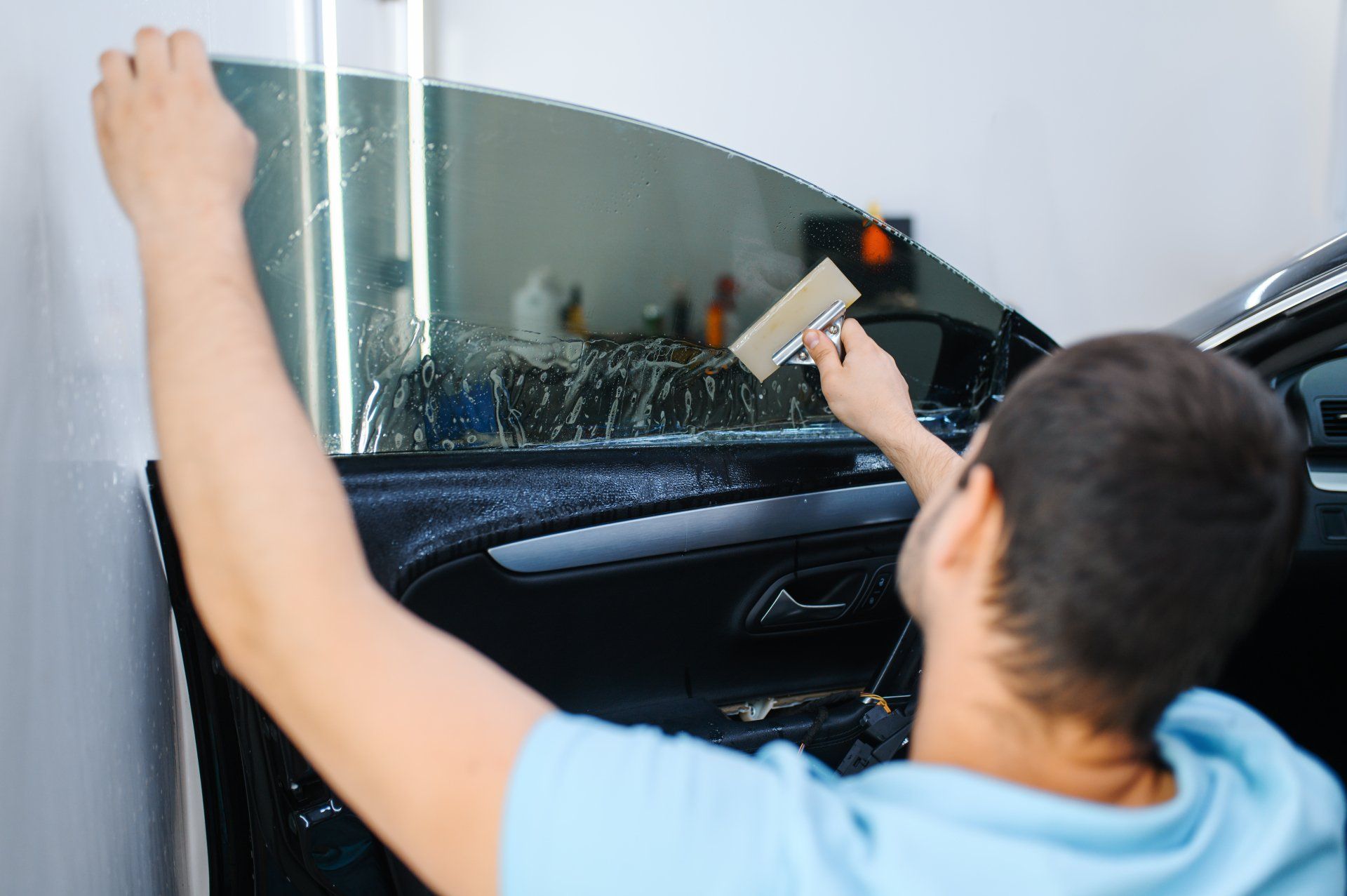Just how to Select the Right Shade for Your Automobile's Window Tinting
Just how to Select the Right Shade for Your Automobile's Window Tinting
Blog Article
The Process of Expert Window Tinting Explained
From selecting the right film type to the meticulous preparation of windows, each action plays a critical role in attaining a perfect application. Complying with these preliminary prep work, the mindful cutting and application of the film need accuracy to avoid flaws.
Picking the Right Window Film
The preliminary factor to consider is the kind of movie, which can vary from colored, metalized, to ceramic films (window tinting). Dyed films mainly supply personal privacy and visual improvement, while metalized films show warm and UV rays, boosting power efficiency.
Next, think about the film's Visible Light Transmission (VLT) percentage, which identifies just how much light goes into the area. A reduced VLT supplies higher personal privacy and warm being rejected however might minimize natural light substantially. In addition, the movie's solar warm gain coefficient (SHGC) is vital; a reduced SHGC shows far better thermal performance, helping to keep indoor convenience.

Preparing the Windows
Once the appropriate home window movie has actually been chosen, the next action is extensively preparing the home windows for setup. This preparation is essential for achieving optimal adhesion and making certain a remarkable look post-installation.
The first job includes cleaning the home windows carefully (window tinting). A top notch glass cleaner is essential, ideally one that is ammonia-free to avoid destructive any kind of home window seals or tint materials. Making use of a lint-free fabric or paper towels, professionals need to get rid of any type of dirt, dirt, or grease, paying special focus to the edges and corners where particles usually builds up

Reducing the Film
An accurate approach to cutting the movie is important for making sure an ideal fit on the ready windows. This action requires both skill and interest to detail, as mistakes can bring about unsightly gaps or overlaps that compromise the visual and functional top qualities of the color.
Before reducing, the expert ought to gauge the window dimensions properly, accounting for any kind of unique shapes or shapes. It is recommended to make use of top quality home window movie, as this material has a tendency to be extra forgiving during the reducing procedure. The film is normally laid level on a clean, smooth surface area, and a sharp energy blade is employed to make sure tidy edges.
To accomplish optimum results, numerous specialists make use of design templates developed from previous installations or use software application to make precise patterns. A common method includes including an added margin to the design template, enabling changes throughout the application phase.
Moreover, cutting the film in a regulated setting minimizes the danger of impurities impacting the sticky side. By adhering to these precise methods, home window tinting experts can make sure that the movie not just fits effortlessly yet additionally executes properly with time, boosting both appearance and performance.
Applying the Tint
After meticulously reducing the movie to the right measurements, the next step involves applying the color to the home window click for source surface area. This procedure starts with making sure that the home window is tidy and cost-free from any kind of dirt, particles, or deposits that can affect bond. A specific cleansing solution is typically used, followed by comprehensive drying with a lint-free towel.
When the surface is prepared, the installer will meticulously position the tint film against the glass. It is important to align the movie precisely to prevent misplacement, as any mistakes can result in an unprofessional look. To facilitate this, the installer might utilize a light mist of application option on the sticky side of the movie, enabling minor repositioning if necessary.
Utilizing a squeegee, the installer will then start to push the film onto the glass, functioning from the center in an outward direction to eliminate air bubbles and ensure a company bond. This technique is important, as it guarantees a smooth and flawless coating. Throughout the application, interest to information is crucial to stop folds or flaws, making sure that the tint not just boosts visual appeals however also gives the wanted performance.
Last Inspection and Care
The last inspection is an essential step in the window tinting procedure, guaranteeing that the installment meets both visual and functional criteria. During this stage, professionals thoroughly analyze the mounted tint for any kind of imperfections, such as bubbles, creases, or imbalances. A complete evaluation likewise consists of checking the adherence of the movie to the glass, along with its uniformity and general look.
After the examination, proper care and maintenance guidelines are provided to the client. It is vital to notify them about the suggested timeline for cleaning the tinted windows, commonly recommending a delay of at least one month after installation to enable the adhesive to treat totally. Clients browse around here ought to be informed on ideal cleaning products and methods, stressing the avoidance of ammonia-based cleansers that can damage the color.
In addition, professionals must advise customers on the significance of routine maintenance to lengthen the life of the tint. This consists of routine look for signs of wear or damage and responding immediately to any type of concerns. By guaranteeing a thorough last assessment and offering clear care standards, home window this content tinting experts enhance consumer contentment and the durability of their work.
Final Thought
The specialist home window tinting process incorporates several crucial steps that make certain high-grade results. Picking the appropriate film type, preparing the home windows diligently, precisely reducing the film, and using it with precision are crucial for accomplishing a perfect surface. An extensive last examination guarantees that all criteria are met, while correct post-installation treatment is vital for preserving the tint's durability and performance. Complying with these procedures eventually boosts both the visual appeal and functionality of the tinted windows.
Report this page